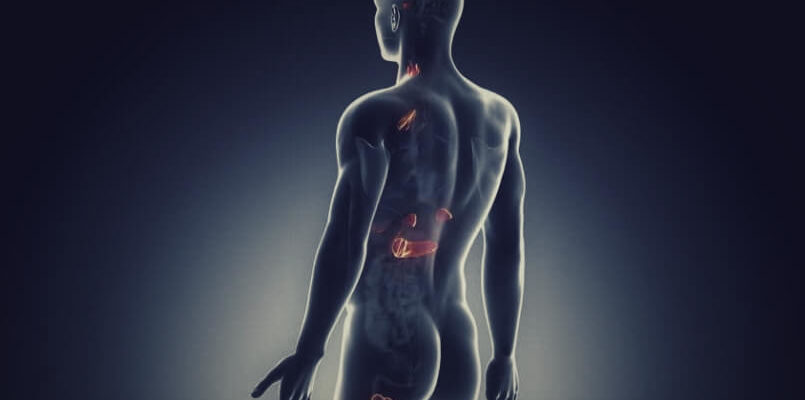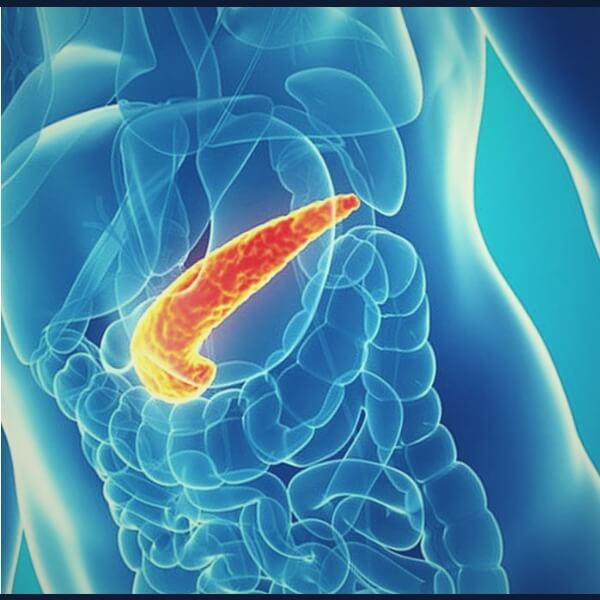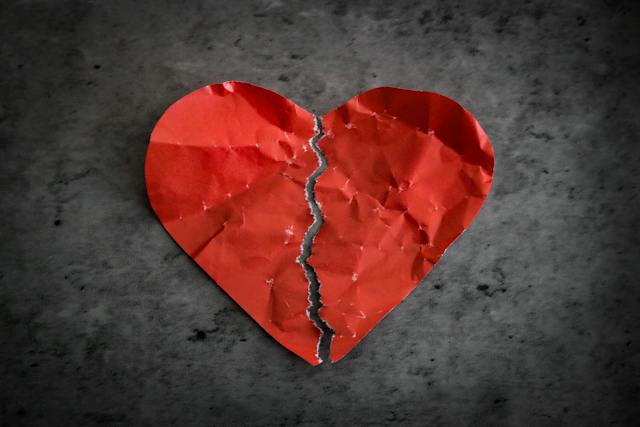The human endocrine system: 163 Facts and about its structure. The endocrine system is one of the most important systems in the human body. Its importance is that it is necessary for any other system in our body for its proper functioning.
In this article, we will provide many facts about the endocrine system and find out what it means for each of us. We will consider the glands of the endocrine system, their structure, and their features. And also we will learn the main thing about the main hormones of the endocrine system.
So, briefly and clearly about what the endocrine system is!

Facts about Endocrine and exocrine systems
1. The endocrine and exocrine systems deal exclusively with the glands.
2. The secretions of the exocrine glands mainly consist of saliva, enzymes, sweat, etc. The secretions are transported through the ducts.
3. Endocrine glands secrete hormones. They do not contain ducts.
4. There are eleven organs and glands that secrete hormones, which include the endocrine system. It:
- Hypothalamus;
- Pituitary;
- Thyroid;
- Parathyroid glands;
- Thymus;
- Pineal gland;
- Adrenal glands;
- Pancreas;
- Sex glands;
- Placenta.
Let’s find out about each gland/organ in detail.
Hypothalamus
5. The hypothalamus is the basal part of the diencephalon. The diencephalon is part of the forebrain.
6. The endocrine system is connected with the nervous system through the hypothalamus. …
7. The cells of the hypothalamus are called neurosecretory cells. These cells form nuclei that produce hormones.
8. These cells secrete two types of hormones. The first type – stimulates the hormonal secretion of the pituitary gland, and the second type – suppresses the hormonal secretion of the pituitary gland.
9. The pituitary gland connects to the hypothalamus through the hypothalamic-pituitary portal blood vessel.
10. The functions of the hypothalamus are to maintain blood pressure, homeostasis, body temperature, fluid and electrolyte balance of the body.
Pituitary
11. The pituitary gland is located in the “Turkish pocket” (the cavity of the sphenoid bone, which is located at the base of the brain ).

12. The word “pituitary gland” means “to grow”. This gland comes from two embryonic structures – the epithelium of the brain and pharynx.
13. The pituitary gland weighs only 0.5 grams and is only one centimeter in diameter with a thickness of 0.5 centimeters. The pituitary gland increases in size in pregnant women.
14. The pituitary gland has two parts. The first is the glandular anterior part. It is called the adenohypophysis.
15. The second is the posterior part, which is called the neurohypophysis.
16. The adenohypophysis secretes six hormones, these are:
- A growth hormone;
- Thyroid-stimulating hormone;
- Adenocorticortropic hormone;
- Follicle-stimulating hormone;
- Luteinizing hormone;
- Prolactin.
The neurohypophysis secretes only two hormones, these are:
- Vasopressin;
- Oxytocin.
Growth hormone secreted by the adenohypophysis
17. Growth hormone is also known as growth hormone (STH). It is a peptide hormone.
18. The secretion of growth hormone depends on the secretion of growth hormone-releasing hormone and growth hormone inhibiting hormone by the hypothalamus.
19. Growth hormone promotes the growth of all body tissues and improves all metabolic processes. Growth hormone affects the metabolism of carbohydrates, lipids, and proteins.
20. Growth hormone stimulates processes such as chondrogenesis (cartilage formation) and osteogenesis (bone formation).
21. It helps the body retain essential minerals like potassium, sodium, nitrogen, phosphorus, etc.
22. Growth hormone reduces the use of glucose by cells and increases the release of fatty acids from adipose tissue. Therefore, cells that can use fatty acids for their function instead of glucose will use them.
This reserves glucose for tissues that are completely dependent on it (for example, for the brain).
Thyrotropin (TSH)
23. TSH stimulates the thyroid gland to secrete two hormones – thyroxine and triiodothyronine.
24. TSH controls the development and maintenance of the thyroid gland.
25. It also promotes the accumulation of iodine, converting it to thyroid hormones and the release of these hormones into the blood.
26. Excessive TSH secretion increases the size of the thyroid gland.
Adenocorticotropic hormone (ACTH)
27. Adrenocorticotropic hormone is a polypeptide or protein hormone. It is a tropic hormone (stimulates other endocrine glands).
28. ACTH stimulates the adrenal cortex to release hormones.
29. ACTH stimulates the synthesis of melanin. It also stimulates adipose tissue to release fatty acids.
30. It also induces the secretion of the hormone insulin.
38. The secretion of ACTH (like TSH) depends on various stimuli such as drugs, extreme temperatures, emotional stress, etc.
Follicle-stimulating hormone (FSH)
39. Follicle-stimulating hormone is a glycoprotein hormone. This hormone stimulates the genitals.
40. In women, the target organ for FSH is the ovaries. It also stimulates the secretion of estrogen.
41. The target organs in men are the testes. FSH increases the rate of spermatogenesis.
Luteinizing hormone (LH)
42. This is a glycoprotein hormone. In women, LH (along with FSH) promotes the maturation of ovarian follicles and induces ovulation.
43. LH stimulates the synthesis and secretion of ovarian hormones.
44. In men, this hormone stimulates the production and secretion of testosterone.
* Note: The endocrine system begins to secrete both LH and FSH only after puberty.
Prolactin
45. Prolactin is also known as luteotropin, luteotrophic hormone, lactogenic hormone, mammotropin.
46. It is a protein or peptide hormone.
47. Prolactin has about 80 hormonal functions!
48. It stimulates the formation and secretion of milk in mammals. Along with estrogens, it also stimulates the growth of the mammary glands.
49. It causes the corpus luteum of the ovary to secrete progesterone, which suppresses the release of LH and ovulation.
Vasopressin
50. Vasopressin is also known as antidiuretic hormone (ADH). It is a peptide hormone.
51. Vasopressin reduces the loss of water from the body through urine.
52. When vasopressin is released in large quantities, it constricts blood vessels and raises blood pressure.
Oxytocin
53. Oxytocin is composed of a number of amino acid residues. It is a neuropeptide.
54. The word “oxytocin” means “quick birth”.
55. Oxytocin stimulates the muscles of the uterus and causes contractions, thereby helping with childbirth.
56. It also induces milk secretion.
57. Oxytocin also affects the non-pregnant uterus, making it easier for sperm to move. No wonder oxytocin is called the hormone of love.
58. Vasopressin and oxytocin are composed of nine amino acids. 7 of them are the same and only two are different. Moreover, their functions are completely different.
Thyroid
59. The thyroid gland is the largest endocrine gland in the body. It is shaped like a butterfly.
60. The word “thyroid” comes from the Greek word “tyros” meaning shield.

61. The thyroid gland weighs 20 to 30 grams in an adult.
62. It consists of two lobes, which are located on either side of the larynx.
63. These two lobes are joined together by a glandular tissue called the isthmus of the thyroid gland.
64. The lobes are also divided into numerous lobules. Lobules are made up of follicles known as acini.
Thyroxine
65. Iodine is essential for the regular production of thyroxine. Thyroxine consists of almost 65% iodine. Thyroxine helps in maintaining iodine homeostasis.
66. As soon as hormones are produced, peptide bonds undergo hydrolysis, and thyroxine enters the bloodstream.
67. Thyroxine controls basal metabolism and heat production in the body.
68. Thyroxine maintains blood pressure. It also lowers cholesterol levels.
69. A normal level of thyroxine is necessary for the functioning of the gonads and the effective work of the muscles.
70. Thyroxine plays an important role in the development of the nervous system, especially in the first year of human life.
71. Thyroxine increases the absorption of glucose from the small intestine.
72. Thyroxine is essential for the normal functioning of the genitals. Lack of thyroid hormones causes a decrease in libido.
In addition, lower thyroxine levels in women cause frequent menstrual bleeding.
Calcitonin
73. C-cells of the thyroid gland or parafollicular cells secretes Thyrocalcitonin (TCT). This hormone is also known as calcitonin.
74. Thyrocalcitonin is a polypeptide hormone. It controls the level of calcium and phosphate in the blood.
75. The hormone TCT reduces the secretion of hydrochloric acid in the stomach.
Parathyroid glands
76. There are four parathyroid glands present in the human body. Each pair is found in each lobe of the thyroid gland.
77. The parathyroid glands have two types of cells – the main cells and the oxyphalic cells. The main cells secrete parathyroid hormone, the functions of the oxyphalic cells are unknown.
78. Oxyphalic cells are absent in children (up to 7 years old) and other animals.
Thymus (Thymus gland)
79. The thymus is partly a lymphoid organ and partly an endocrine gland.
80. It is located above the heart and behind the breastbone.

81. Thymus is more active in children. When a person reaches puberty, the thymus gland shrinks and transforms into regular adipose tissue.
82. Thymus has two lobes. It is covered with a fibrous capsule, which is divided into the outer cortex and the inner substance.
83. Thymus secretes four hormones (thymulin, thymosin, thymopoietin, Insulin-like growth factor-1 (IGF-1)).
84. T-lymphocytes are “born” in the bone marrow. Then they migrate to the thymus gland and there begin to increase in number and variety to be able to fight antigens.
85. The thymus processes T-lymphocytes so that they do not attack the antigens present in the body.
86. This whole process takes place before birth and continues for several months after birth.
Pineal gland
87. The pineal gland is located on the front of the brain. It releases melatonin.
88. Melatonin plays an important role in the regulation of the body’s circadian rhythms.
89. Melatonin supports the sleep-wake cycle and body temperature.
90. Melatonin even affects menstrual cycles, defenses, and metabolism.
91. In animals, it plays a big role. Melatonin affects their sexual and reproductive function.
Adrenal glands
92. The adrenal glands in the endocrine system weigh 6 grams each and have a length of 25 to 50 millimeters. They have a pyramidal structure.
93. The outer shell forms the crust. It contains three zones: outer – glomerular, middle – bundle, and inner-reticular

94. The adrenal cortex is saturated with vitamin C and cholesterol, two compounds that are essential for the synthesis of steroid hormones.
95. Adrenaline and norepinephrine are secreted inside the adrenal glands. These hormones are known as catecholamines.
96. Different parts of the adrenal cortex secrete different types of hormones.
97. Mineralocorticoids regulate the electrolyte and water balance of our bodies.
98. Mineralocorticoids help retain sodium in the salivary glands, sweat glands, renal tubules, etc. They also promote the excretion of magnesium through urine.
99. Glucocorticoids stimulate glucogenesis (glucose production), lipolysis (lipid breakdown), and proteolysis (protein breakdown).
100. Cortisol secreted by the adrenal glands supports kidney and cardiovascular function.
101. It plays a role in reducing the level of red blood cells and white blood cells. Stimulates the secretion of the digestive system.
102. Cortisol is known as a stress-fighting hormone.
103. The adrenal androgen is vital for hair growth in the axial area (underarms), pubic area, and on the face during puberty.
Adrenalin
104. Only two hormones (adrenaline and norepinephrine) are secreted in the adrenal medulla. They are often referred to as “fight or flight” hormones.
105. Adrenaline stimulates the breakdown of glycogen (our body stores glucose in the form of glycogen) into glucose. It also promotes the release of fatty acids from adipose tissue.
106. During emergencies, blood pressure and heart rate increase. Adrenaline increases blood flow to the muscles, heart, and nerve tissue as it prepares the body for fight or flight.
107. Adrenaline relaxes smooth muscles and stops digestion and peristalsis. It also relaxes the bronchi, dilates the pupil, increases sweating, and increases body temperature.
108. Adrenaline causes goosebumps through muscle contractions (this reaction is rudimentary in humans).
109. It promotes rapid blood coagulation and causes faster and more acute reactions to external stimuli.
110. Adrenaline drives blood away from the skin. This is why your face and skin turn pale when you are scared.
111. Adrenaline is one of the simplest hormones. This is the first hormone to be synthesized (in 1904).
112. There are three differences between adrenaline and norepinephrine:
- Adrenaline dilates blood vessels and norepinephrine constricts them;
- Epinephrine has a greater effect on cardiac stimulation than norepinephrine;
- It has a greater effect on body tissues (5-10 times more) than norepinephrine.
Pancreas
113. The pancreas is both an exocrine and an endocrine gland.
114. It is located below the abdomen, looks like a leaf, and weighs almost 85 grams.

115. It secretes insulin, somatostatin, and glucagon.
Glucagon
116. Glucagon is a polypeptide hormone. It acts on the liver and promotes glycogenolysis (the conversion of glucose to glycogen) and gluconeogenesis.
117. Glucagon reduces the absorption of glucose by the cells of the body.
118. One of the important functions of glucagon is to provide immediate protection against hypoglycemia.
119. It is an important regulator of amino acid metabolism. Glucagon converts amino acids to glucose
Insulin
120. Insulin is a peptide hormone. It maintains glucose levels in the body.
121. Insulin is the first protein to be chemically synthesized (in 1963).
122. Insulin lowers blood glucose by stimulating cells in the body to absorb glucose (especially fat cells and muscles). It first acts on muscle tissue.
123. It promotes glycogenesis (formation of glycogen), absorption of fatty acids, lipogenesis (formation of lipids), and reduces gluconeogenesis (production of glucose) in liver cells.
124. Insulin inhibits the breakdown of glycogen and amino acids or fatty acids to glucose.
125. High blood sugar stimulates insulin secretion, while low blood sugar inhibits it.
126. Insulin disappears from the circulation within 10-15 minutes.
127. Food enzymes digest insulin.
Genitals
Let’s consider how the endocrine system is connected with the genitals of men and women.
Testicles
128. The testicles function as a sex organ and an endocrine gland.
129. The testicular wall is composed of connective tissue. Inside the testicle, there are 250 small compartments called lobules.
130. These lobules consist of one to three seminiferous tubules. It is in them that sperm are formed.
131. Leydig cells produce several types of sex hormones, which are collectively known as androgens. The main hormone is testosterone. It’s a steroid.
132. FSH and LH affect testosterone, causing the maturation of the male reproductive organs and the appearance of secondary sexual characteristics (hair growth on the face and armpits, voice, and muscle strengthening).
Ovaries
133. In women, a pair of ovaries are located in the pelvic region. Each ovary is the size and shape of a large almond.
134. The ovary consists of follicles and stromal tissues. It produces eggs.
135. The ovaries secrete estrogen and progesterone.
Estrogen secreted by the ovaries
136. Estrogen is the collective name for three hormones – estradiol, estrone, and estriol. The secretion of estrogen begins just before puberty and continues until the woman is sexually active.
137. Estrogen is secreted not only by many invertebrates but also by almost 30 families of higher plants. Why is unknown.
138. Estrogen is responsible for the growth, development, and maintenance of the female reproductive tract, genitals, and sex characteristics.
139. It also affects the deposition of fat and hair.
Progesterone secreted by the ovaries
140. Progesterone is secreted by the corpus luteum (temporary endocrine tissue) in the second half of the menstrual cycle.
141. Progesterone promotes breast enlargement. However, it does not play any role in milk secretion.
142. It also affects kidney function and maintains electrolyte balance.
143. Progesterone affects uterine contractions during pregnancy.
Placenta
144. The placenta is usually called a “defective endocrine gland” because it lacks some enzymes for the complete synthesis of hormones.

145. How does the placenta secrete hormones? The mother’s liver, the baby’s liver, and the adrenal glands (of both the mother and the baby) provide the necessary conditions for hormone production.
Placenta-produced progesterone
146. The placenta also produces progesterone, converting cholesterol or pregnenolone from the mother’s blood into it.
147. Progesterone prevents miscarriage.
Estrogen secreted by the placenta
148. The placenta produces estrogens with the help of the child’s adrenal glands and liver.
149. Estrogen helps in the growth and development of the mammary glands, and muscles of the uterus during pregnancy.
150. It induces changes in maternal metabolism by altering the synthesis of proteins and carbohydrates.
Human chorionic gonadotropin (hCG) produced by the placenta
151. It is a glycoprotein, its structure and functioning are similar to LH.
152. Its levels peak between the 80th and 90th days of pregnancy.
153. HCG constantly maintains the secretion of progesterone and estrogen during pregnancy.
154. HCG also has a stimulating effect on the testicles of a baby boy. This leads to the production of testosterone and the growth of the genitals.
Other hormone-secreting organs
The human endocrine system also includes other organs that secrete hormones. They act as partial endocrine glands.
155. Atrial Natriuretic Factor (ANP) is secreted in the heart. This hormone is secreted when blood pressure rises.
156. PNP causes vasodilation and lowers blood pressure.
157. Renin, erythropoietin, and prostaglandins are secreted in the kidneys.
158. Gastrin, cholecystokinin (CCK), secretin, and gastric inhibitory polypeptide (GIP) are secreted in the gastrointestinal tract. All of these hormones are polypeptides.
159. Gastrin acts on the gastric glands and promotes the secretion of hydrochloric acid.
160. The duodenum secretes cholecystokinin when food contains a lot of acids and fats.
161. Cholecystokinin causes the gallbladder to secrete bile into the duodenum.
162. Secretin stimulates the outflow of bile from the gallbladder and other intestinal juices from the small intestine.
163. The inhibitory polypeptide of the stomach inhibits the secretion of the stomach and its motility. It is secreted in the small intestine.
So, we examined the basis of the endocrine system, learned about the functions of hormones produced by its glands. How do you like the article?

